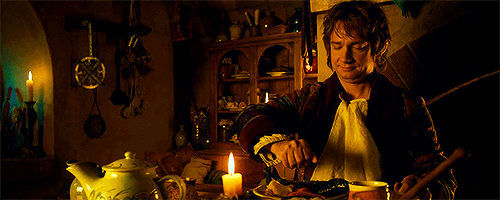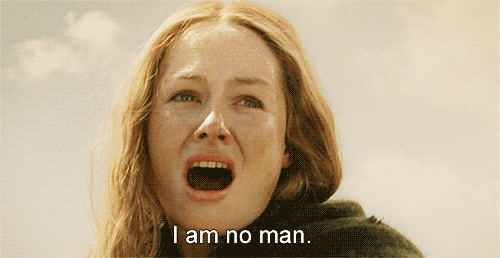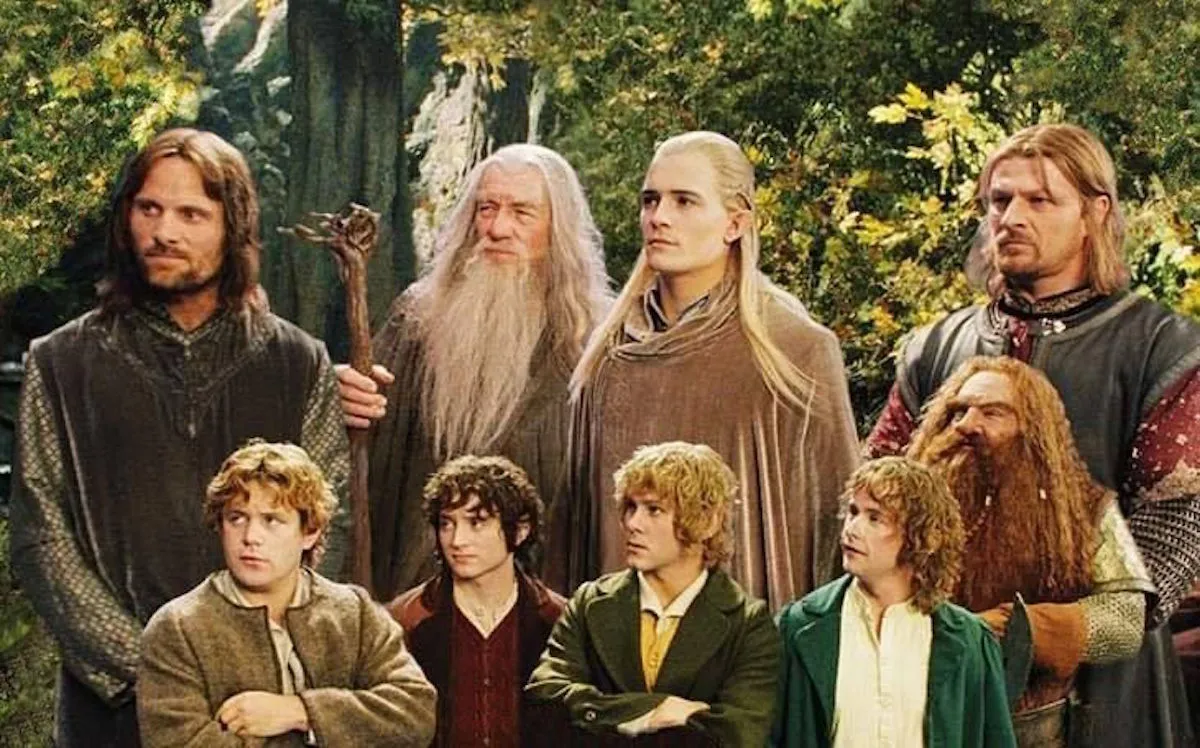The ongoing Amazon Prime Video series The Rings of Power has brought the spotlight back on Middle-earth and its inhabitants, who have all returned to the forefront of people’s imaginations—even though, let’s be honest, when have they ever really left? At least for me, they’ve been living rent-free in my frontal lobe ever since I first got read The Hobbit as a bedtime story in kindergarten.
I’m pretty sure I’m not alone in this, though. After all, The Lord of the Rings is one of the most successful books of all time, and its three-part adaptation was a watershed moment in cinema history that very well changed it for good. And that’s without even mentioning the whopping eleven Academy Awards the saga received for its final chapter—and while The Return of the King wasn’t the only movie to do so, it still holds the record for the cleanest sweep in Oscar history.
I’m definitely one of those people who rewatch the entire saga every year, like a grand nerd family holiday, and I think that by now I can pretty much quote the extended editions of the movies by heart in both Italian and English. All of this to say, I feel pretty qualified in taking on the task of compiling what I think is the ultimate ranking of all the movies set in Middle-earth.
Feel free to agree or disagree, but first, a few clarifications. I’m focusing only on the Peter Jackson-directed trilogies, so no Rings of Power and no stand-alones like the 1978 animated movie or the 1980 television special. Plus, keep in mind that I’m always referring to the extended editions rather than the theatrical releases, since those are the ones I rewatch more frequently and the ones I know best.
6. The Battle of the Five Armies
There are several problems with The Hobbit trilogy, to be honest. I think that one of the biggest issues that made the movies what they are is that they were entrusted with being this thematic and tonal prequel to Lord of the Rings—which The Hobbit has never been. Like yes, the events in The Hobbit happen before those in Lord of the Rings, but they are two diametrically different stories—one an episodic fairytale meant to be read in chapters to children as a bedtime story and the other a sprawling epic journey inspired by Old English and Germanic poems.
All of this to say that The Hobbit movies should have remained the two-part project that Guillermo del Toro initially workshopped rather than the trilogy we ended up seeing. Each movie is worst than the previous one, which means that the final installment of the series, The Battle of the Five Armies, ends up suffering most of all. Why does this battle take up almost two hours when it’s just one chapter in The Hobbit? Not everything can be the Pelennor Fields and not everything should. Why oh why does Smaug die before we even see the movie’s title card? Why did we have to suffer through that terrible Kili and Tauriel subplot?
I honestly think that the only moments of The Battle of the Five Armies that I truly enjoyed were the ones in which Bilbo returns home to Bag End a changed hobbit, a Tolkien staple theme that I’ve always particularly adored—but then again, that’s all thanks to the spot-on casting of Martin Freeman. More on that later.

5. The Desolation of Smaug
The Desolation of Smaug, the second installment of The Hobbit trilogy, is only slightly better than The Battle of the Five Armies because it’s truly a joy to see Benedict Cumberbatch having the time of his life playing Smaug—and the dialogue between him and Bilbo in the halls of Erebor is delightful to watch.
Overall, however, the movie suffers from a serious pacing problem, which is a given considering that the initial two-part project was stretched into three, and the source material just isn’t enough for three movies. Plus the unforgivable Kili and Tauriel subplot—the proper introduction of Lee Pace as Thranduil, another moment of inspired casting, is really not enough to compensate for that terrible terrible attempt at a romance that we’ve had to see. “I could have anything down my trousers.” I’m sorry, what. If you want to twist The Hobbit into a tonal prequel for Lord of the Rings then you can’t have these kinds of lines in it. I’m sorry, you just can’t.

4. An Unexpected Journey
An Unexpected Journey is the best of the three The Hobbit movies because it’s for the most filled with the excitement of a new beginning that is at the same time a return to known and beloved settings and characters—that is, until the mess that is the ending, which reminds you once more that these movies should have been two and that Guillermo del Toro really needed to be helming them.
Still, there are some truly gorgeous scenes in An Unexpected Journey. Everything with Martin Freeman’s Bilbo in it, for starters—he’s just a delight and the perfect actor for this role, fastidious and brave at the same time and truly hilarious, especially in his first interactions with the dwarves and Gandalf. Gandalf is, of course, always a win—not that you can expect anything less from Sir Ian. I also particularly loved the scene with all the dwarves singing about their lost home in Bag End—nothing short of spectacular. And then there’s the entire riddles in the dark sequence—truly the only thing linking The Hobbit and Lord of the Rings together and maybe just enough to compensate for the horrible slapped-on ending.

3. The Two Towers
The three Lord of the Rings movies obviously take all three top spots in this ranking. Even though all three of them are amazing and legendary, I am personally much more attached to both The Fellowship of the Rings and The Return of the King—meaning that The Two Towers ends up in the third position. Don’t take this as a sign that I think it’s the worst of the three. I just like the other two better, and The Two Towers truly has nothing to envy either of them in terms of iconic lines and spectacular set pieces.
All Helm’s Deep and “They’re taking the hobbits to Isengard!” aside, though, in my opinion, there are two true jewels in The Two Towers’ crown. The first is obviously Gollum—an amazing performance by Andy Serkis, an incredible feat of technology and one of the best characters that Tolkien ever created.
And then there is, of course, the actual best character that Tolkien ever created, Samwise Gamgee, who in The Two Towers gives his famous speech about great stories as the city of Osgiliath crumbles around him and Frodo. “Folk in those stories had lots of chances of turning back, only they didn’t, they kept going, because they were holding on to something. That there’s some good in this world, Mr. Frodo, and it’s worth fighting for.” That’s one of the great messages from Lord of the Rings that pretty much shaped my life—excuse while I go cry in my pillow for a bit.

2. The Fellowship of the Ring
If I had to list every single thing that I love about The Fellowship of the Ring this list would probably turn into a PhD dissertation. The fact is that the first ever Lord of the Rings movie tastes of simple beginnings. The stakes slowly rise throughout the film and climax in Boromir’s death, but still, the entire film is coated in the comforting landscapes and sounds of the Shire. To this day, after having watched The Fellowship of the Rings a goody forty times, I still feel like crying when Concerning Hobbits comes in and Bilbo’s voiceover says that “where our hearts truly lie is in peace and quiet and good, tilled earth. For all hobbits share a love for things that grow.”
There’s also plenty of absolutely iconic scenes, from the council of Elrond to Weathetop to the fight against the Balrog and Galadriel’s temptation in Lothlorien down to Boromir’s death—heart-wrenching and brutal, just what the movie needs to shout at the viewer that things just got serious. And then there’s Gandalf’s speech to Frodo while the Fellowship is in the mines of Moria—one of the first that for me really drives home the whole message of Lord of the Rings.

1. The Return of the King
It has always been The Return of the King for me. The grandeur, the impossible stakes, the sacrifice, the battles—all more than enough for me to stand watching the sequence in Shelob’s lair again and again despite my being profoundly disgusted by it.
Whenever I rewatch the movie now, hopefully more mature than I was when I first popped the DVD into my player, I can see how so many of the movie’s scenes are permanently burned into my memory, like the ride of the Rohirrim into the battle at the Pelennor Fields and the lighting of the fires from Gondor to Rohan. Plus, so many of its story beats have shaped the way my imagination works and the tropes I have grown up loving. The destined ruler returning to heal a broken land and the hero who returns from his journey to find that he no longer fits in the place he set out to save have always had a special place in my heart and it’s all because of Aragorn and Frodo.
And then, of course, there’s Éowyn. How could ten-year-old me not get obsessed, watching her stab right through the Witch-King’s helmet after shouting “I am no man?” That scene has pretty much made me the person I am today—and for that alone, I simply have to put The Return of the King first on this ranking.

Now I’m curious—what would your personal ranking of the Lord of the Rings and The Hobbit movies be?
(featured image: New Line Cinema)







Published: Oct 8, 2022 09:00 am